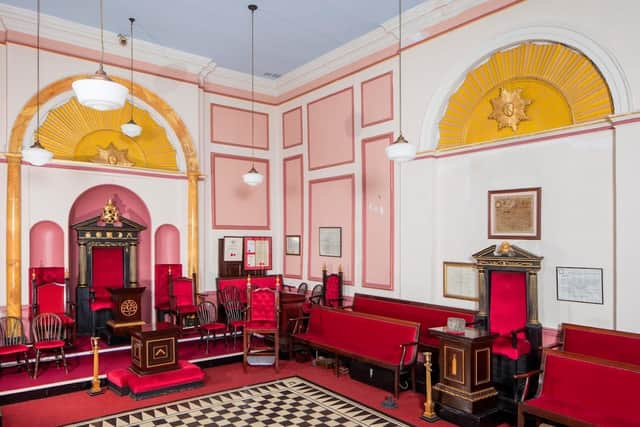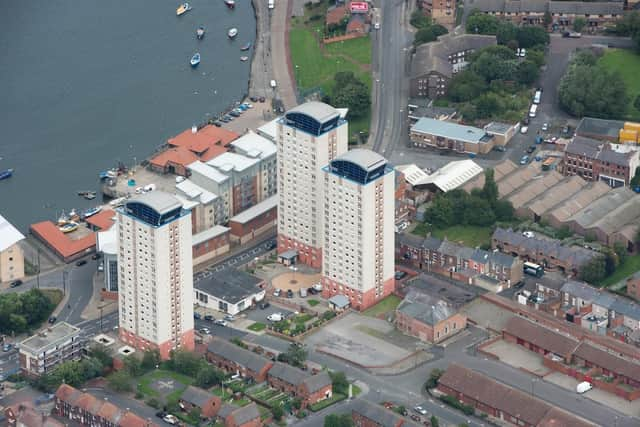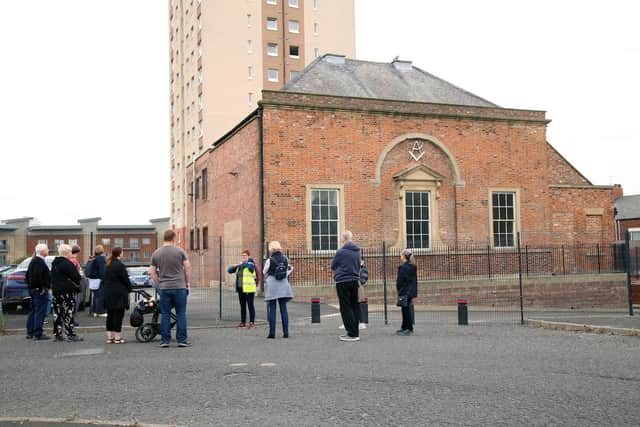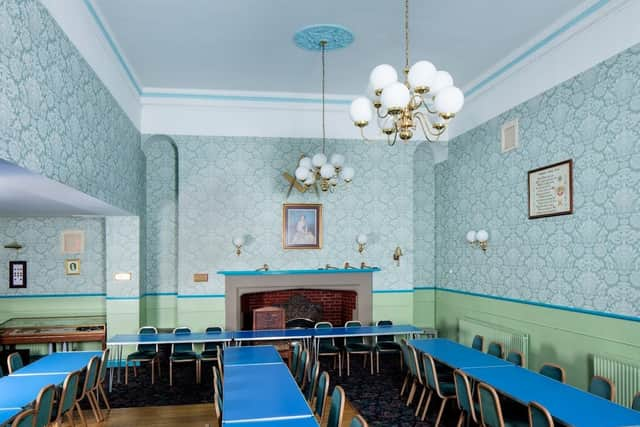Historic England announces £180,000 repairs funding for Sunderland's 230-year-old Phoenix Hall
and live on Freeview channel 276
Phoenix Hall in the East End is the oldest surviving purpose-built masonic lodge still in use by the Freemasons in England.
The Grade I-listed Georgian building, in Queen Street East, has been in continuous use by Freemasons since it was built in 1784-5.
Advertisement
Hide AdAdvertisement
Hide AdNow dwarfed by three high-rise tower blocks, Phoenix Hall is a bridge to Sunderland’s past – when the area lay at the heart of the then town was growing in wealth thanks to the trade in coal, timber and shipbuilding.


Maria Carballeira, Historic England’s Partnership Team Architect for the North East, said: “We are delighted to help fund repairs to Phoenix Hall, which is such an important part of Sunderland’s past and has a key role to play in its future.
"This building has been a constant in the city’s changing landscape for over 230 years. Our grant will help open new opportunities for people to find out more about their local heritage and try craft building skills as part of the HAZ Heritage Skills Training Programme.”
Advertisement
Hide AdAdvertisement
Hide AdPaul Swansbury, director of the Queen Street Masonic Temple, added: “We are extremely grateful for the support and advice from Historic England in relation to the repair, maintenance and planning for our Grade I-Listed building. It has been invaluable.”


Although the Hall has been extended and altered over the last 237 years, its original structure and interior has remained remarkably intact, with the original organ, ceremonial chairs and furnishings still in place.
Freemasonry was an important and influential national movement during the 18th Century when the Hall was built.
Sunderland had some of the first purpose-built masonic halls after London and funding from the local lodges paid for major building projects in the city such as the Exchange Buildings (High Street East) and the first Wearmouth Bridge.
The new injection of funding from Historic England will enable owners, the Queen Street Heritage Trust, to carry out vital repairs to the roof, joinery and masonry, as well as the interior including the distinctive chequered floor.


Advertisement
Hide AdAdvertisement
Hide AdThe work, part of Sunderland’s Heritage Action Zone (HAZ) initiative will start in May. The repair project will offer opportunities for local people to learn more about the building and its history, as well as take part in ‘hard hat’ tours and practical workshops lead by expert craftspeople.
Historic England is the public body that helps people care for, enjoy and celebrate the nation’s spectacular historic environment.
Phoenix Hall is part of the Sunderland’s Heritage Action Zone (HSHAZ), led by Historic England, Sunderland City Council and partners.
David Dorward, director of the Queen Street Heritage Trust, said: “As a charitable trust we hold Phoenix Hall in care for the many Masonic members and the wider community.


Advertisement
Hide AdAdvertisement
Hide Ad"We are delighted to be part of the Heritage Action Zone, led by Historic England, here in Sunderland. This partnership has brought vital funding which will enable much needed repairs to the fabric of the building and ensure it can continue to be used by the community, as its builders envisaged 237 years ago.”